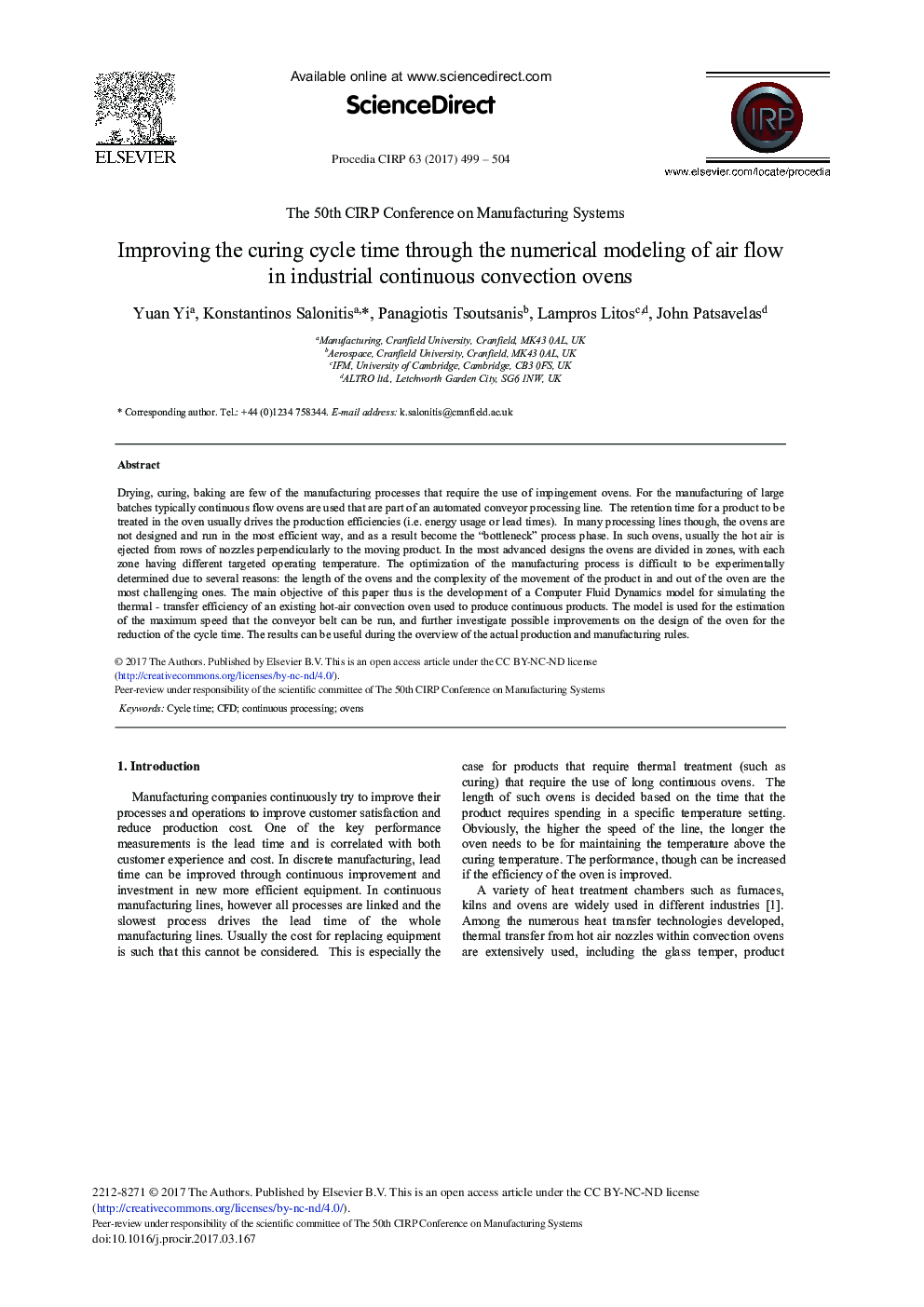| Article ID | Journal | Published Year | Pages | File Type |
|---|---|---|---|---|
| 5470201 | Procedia CIRP | 2017 | 6 Pages |
Abstract
Drying, curing, baking are few of the manufacturing processes that require the use of impingement ovens. For the manufacturing of large batches typically continuous flow ovens are used that are part of an automated conveyor processing line. The retention time for a product to be treated in the oven usually drives the production efficiencies (i.e. energy usage or lead times). In many processing lines though, the ovens are not designed and run in the most efficient way, and as a result become the “bottleneck” process phase. In such ovens, usually the hot air is ejected from rows of nozzles perpendicularly to the moving product. In the most advanced designs the ovens are divided in zones, with each zone having different targeted operating temperature. The optimization of the manufacturing process is difficult to be experimentally determined due to several reasons: the length of the ovens and the complexity of the movement of the product in and out of the oven are the most challenging ones. The main objective of this paper thus is the development of a Computer Fluid Dynamics model for simulating the thermal - transfer efficiency of an existing hot-air convection oven used to produce continuous products. The model is used for the estimation of the maximum speed that the conveyor belt can be run, and further investigate possible improvements on the design of the oven for the reduction of the cycle time. The results can be useful during the overview of the actual production and manufacturing rules.
Related Topics
Physical Sciences and Engineering
Engineering
Industrial and Manufacturing Engineering
Authors
Yuan Yi, Konstantinos Salonitis, Panagiotis Tsoutsanis, Lampros Litos, John Patsavelas,
